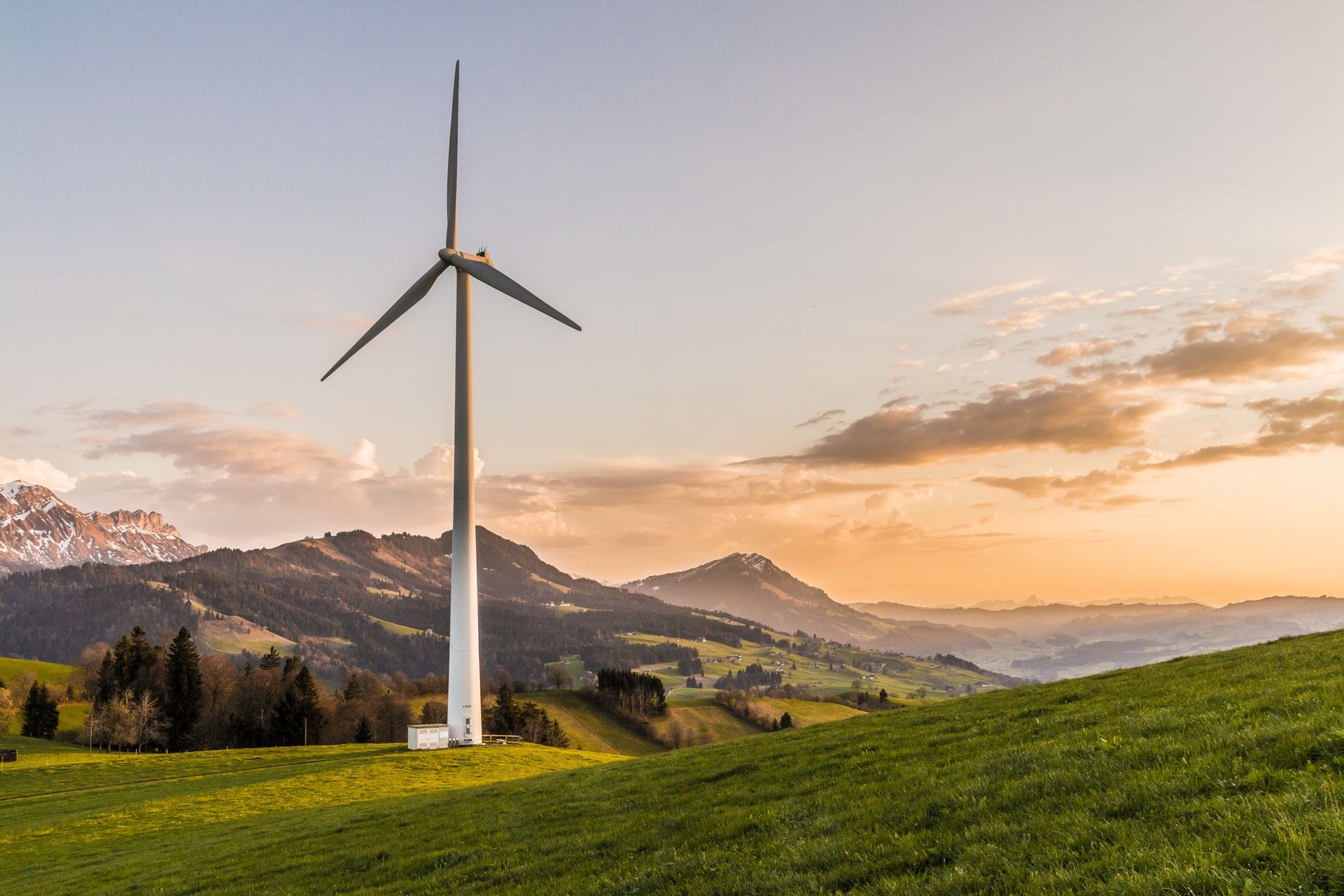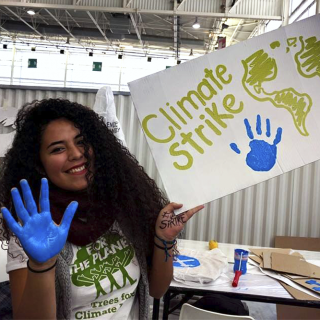When the governments of nearly every country in the world signed the Paris Agreement in defense of our planet’s climate in 2015, they requested an analysis from the scientists at the IPCC of the impacts humanity would suffer if global warming were to reach 1.5ºC, as well as an analysis of how humanity could keep global warming below this level.
Well, the thousands of scientists around the world that make up the IPCC have now weighed in. They delivered their analysis in October of 2018, in a special report that tries to answer the following questions: What will be the impact of a rise in temperatures of 1.5ºC and 2ºC? What is needed to limit the rise in temperatures to 1.5ºC? And what are the trade-offs with the UN Sustainable Development Goals?
Here we have tried to summarize the actions that each economic sector needs to take in order to keep global warming below 1.5ºC. This is not a summary of the IPCC report, but a guide to understanding it. The IPCC report’s “Summary for Policymakers” can be read here.
HOW BIG IS OUR CHALLENGE?
The IPCC scientists developed different scenarios for future levels of greenhouse gas emissions year by year, which they called “trajectories.” In the trajectories compatible with a temperature rise of 1.5ºC, the world must become carbon neutral by the middle of the century. In other words, in these scenarios, humanity must stop adding carbon dioxide (CO2) to the atmosphere by 2050. This would require an unprecedented cut in CO2 emissions, as well as in emissions of other greenhouse gases. A weak or slow response could allow the rise in global temperatures to exceed 1.5ºC. We would then depend more and more on technologies capable of extracting CO2 from the atmosphere (which are still risky, unproven, and often very costly) in order to lower the planet’s temperatures. If no additional action is taken, global warming will have already reached 1.5ºC by around 2040. [1]
Keeping within the 1.5ºC goal requires fast and significant reductions from every sector responsible for greenhouse gas emissions. Below, we list a series of measures that can help reach this goal, grouped together by sector: energy production, land use, industry, transportation, and construction. In the final section we also list some possible ways to remove CO2 from the atmosphere. It is important to note that all sectors have choices regarding how they will reduce their emissions and by how much, but the decisions made by each sector will influence the others.
On an individual level, every one of us will have to change our habits to help limit global warming to 1.5ºC. How? By changing our diets to reduce meat consumption, reducing food waste, driving less and using more public transportation, using more efficient appliances and installing better insulation systems to depend less on air conditioning in hot regions and heating in cold regions. But it is important to remember that these behavioral changes, although important, are not enough on their own. The entire economy must change.

WHAT NEEDS TO BE DONE IN ENERGY PRODUCTION
The energy sector – the set of economic activities that extracts resources like oil, natural gas and coal, generates electricity, produces fuels such as gasoline, diesel and ethanol, and transports energy to where it is used – is responsible for approximately 35% of global greenhouse gas emissions, making it the most carbon-polluting sector[2].
Cutting down on these emissions quickly is essential if we are to reach the 1.5ºC goal. Since other sectors will need to use more electricity to substitute for fossil fuels like oil, coal and gas, it is important that the electricity supply comes from sources with low CO2 emissions (often referred to as “low carbon”). This will require cuts in fossil fuel use and an increase in the use of low carbon sources of energy.
Reductions in energy use
In order to limit global warming to 1.5ºC, fossil fuel use must be drastically reduced. This is especially true for coal, which must be essentially abandoned by around 2040 [4]. But the use of oil must also decrease over the course of the century. And the use of natural gas must also be low by 2100, although in some of the IPCC’s trajectories it must be reduced immediately.
Carbon capture and storage (CCS) – a set of technologies that tries to capture the gases produced by burning fossil fuels and store them in rocks – could, in theory, allow us to use gas and coal for a longer period of time without exceeding the 1.5ºC threshold. But attempts to develop these technologies have faced challenges. Worldwide, at least 32 projects for coal thermal plants with CO2 capture and storage have been cancelled or suspended, and only two are currently in operation. [5]
Reaching the 1.5ºC goal will be much easier, cheaper and less disruptive if governments around the world take immediate steps to replace fossil fuels with clean sources of energy. Continuing investment in thermal plants that run on fossil fuels will result in deeper and more drastic cuts in the future. This will be harder to do and will lead to “stranded assets,” such as coal and gas plants that can no longer operate – leaving investors no longer able to generate the revenues necessary to cover their costs and get any kind of return.
Hope comes in the form of initiatives like the Powering Past Coal Alliance [6], founded in 2017 by 21 countries, states, companies and cities committed to ending the use of traditional coal plants. The Alliance had already expanded to 74 members by September of 2018, including 29 countries, with significant participation by U.S. states, cities and businesses opposed to the Trump administration’s rhetoric in support of coal.
Since 2010, 1,705 coal power plant projects have been cancelled worldwide. [7] The first country to commit to a gradual and total abandonment of coal was the United Kingdom in 2015. Since then, the proportion of electricity generated by coal in the UK has declined rapidly, and coal supplied less than 7% of that country’s electricity in 2017. [8]

In 2016, the world had five times more wind power capacity than it did in 2007 (Pixabay)
The growth of low carbon energy
Low carbon energy, which includes sources like solar, wind, biomass, nuclear, hydro and geothermal, must increase quickly to fill the void left by the reduction in fossil fuel use and, most likely, meet the increasing demand for electricity that will help the world stay within the 1.5ºC limit.
There are many ways in which low carbon sources can come to supply the world’s energy needs. Most trajectories suggest that solar and biomass energy will expand rapidly and become some of the most important sources. There is less certainty about how much nuclear energy will be necessary – with some trajectories suggesting it will be an important source, while others suggest it will not be needed. [9]
According to one recent scientific journal article, electricity generated by wind and solar would have to keep up their recent growth rates (between 25% and 30%) until 2025. After that, the growth of these renewables could slow to between 4% and 5%, which would still keep us on track for a complete decarbonization of global electricity by around 2050. [10]
This transition is already well under way: in 2016, 24% of global electricity was already produced by renewable sources [11], making them the second largest source of electricity after coal [12]. In 2016, the world had 32 times more solar capacity and five times more wind capacity than it did in 2007 [13].
The cost of solar and wind energy are falling rapidly. Between 2010 and 2017, the cost of producing wind energy on land fell by 25%, while the cost to produce solar energy on a large scale fell by 73% [14].
The cost of these renewable sources is competitive with coal. The average cost of coal electricity in 2017 was between $50 and $73 per MWh. Meanwhile, the global average cost of wind power on land was around $67/MWh, and between $56 and $86/MWh for photovoltaic solar power [15]. By the end of 2017, the lowest prices for solar and wind energy were $21/MWh and $19/MWh, respectively, both in Mexico [16]. It is likely that within the next 15 years it will be cheaper to build new solar or wind plants than to keep using the gas plants already in existence [17].
To give investors confidence in the transition to clean energy, support from governments will be important. The government of India, for example, has set a goal of installing 175 GW of renewable capacity by 2022 [18]. In the past year India has invested more in renewable energy than it has in fossil fuels, having more than doubled its investment in solar power, and investing record amounts in onshore wind power [19].
Electricity storage will also be crucial to the success of the energy transition. Since some renewable sources – like wind and solar – are intermittent, the ability to store the electricity they generate may ensure that supply can always meet demand. Storage technology is developing and expanding at a rapid pace. And decreasing costs, the need to control air quality, pollution regulations, and climate policies will probably continue to fuel its expansion.
WHAT NEEDS TO BE DONE IN LAND USE
The earth’s surface and its biodiversity can absorb as well as emit greenhouse gases, meaning decisions about land use will play a big role in determining whether or not global warming will exceed 1.5ºC. Activities related to land use – referred to as the Agriculture, Forestry and Other Land Uses (AFOLU) sector in the jargon of international climate negotiations – currently emit more greenhouse gases than they absorb, and are responsible for 24% of global emissions [22].
However, reducing emissions cannot be the only priority for this sector. Land, and the biodiversity on it, must also provide food for people and animals, habitat for wildlife, and biomass for energy. In addition, it must also keep providing other services vital to human life, such as clean air and water, flooding control, and pollination for agriculture – referred to as “ecosystem services.”
It is possible to reduce emissions from land use through many means, but each choice has a consequence. For example, expanding forests removes CO2 from the atmosphere but reduces the area available for agriculture. Planting trees and other crops to burn for energy generation, while at the same time capturing and storing the CO2 generated (bioenergy with carbon capture and storage, or BECCS), increases demand for land and water, competes with food production, and may compromise local air quality.
Two approaches can help us keep global warming below 1.5ºC: protecting and expanding ecosystems that store carbon, and introducing agricultural practices that reduce emissions from land use.

At present, activities related to land use emit more greenhouse gases than they absorb, and are currently responsible for 24% of global emissions (Azil Mazumder/Pexels)
Protect forests and soil
Forests and soil store large quantities of carbon. The state of these ecosystems will play an important role in determining the level of warming we will face.
The food we consume plays an important role in determining the state of forests and soils. Meat, seafood, eggs and dairy are responsible for between 56%-8% of emissions generated by food production, even though they contribute to only 37% of proteins and 18% of calories consumed by humans [24]. The foods whose production generates the majority of emissions include beef , lamb, and cheese – with the emissions from cattle being about 25 times higher than those needed to produce the protein equivalent in tofu, and more than 60 times greater than the production of vegetables and dried fruit.
The more meat, fish, dairy and eggs people eat, the harder it will be to keep global warming within 1.5ºC, so reducing the consumption of these foods would make a big difference. Reducing meat consumption from 100 grams per day to less than 50 grams per day can cut down one person’s emissions by 35%. According to a 2014 study, switching to a vegetarian diet can cut personal emissions down by 47%, and adopting a vegan diet could reduce these emissions by 60% [25].
Reducing food waste can also help reduce CO2 emissions by reducing the amount of food that needs to be produced. Today, one third of all food produced in the world goes to waste. The emissions from this waste worldwide are greater than all emissions from India combined [26]. Reducing food waste by half by 2030 is one of the UN Sustainable Development Goals [27].
Public policies protecting forests can also help reduce emissions. Costa Rica offers a good example of how it is possible to reverse the impact of farming: in 1943, forests covered 77% of the country. Over the subsequent decades, agriculture and ranching reduced forest cover to the point that, by 1986, it had dwindled to just 41%. The country then began to regenerate its forests, removing subsidies for the cattle industry, and the demand for grazing land shrank as cattle production fell by one third. As a result of this process, by 2012 the forests had been partially restored and covered 52% of the country [28].
The Bonn Challenge is a global effort to restore 150 million hectares of degraded and deforested land all over the world by 2020, and 350 million hectares by 2030 [29]. It is estimated that this reforested land could absorb the equivalent of 7% of emissions from the use of fossil fuels (read more about the carbon-storing potential of forests and soils in the last section of this article) [30].
Land use practices that can reduce emissions
It is also possible to reduce emissions from the use of land without changing its purpose. The carbon stored in soil can be increased through various techniques to restore degraded soil and preparation for farming [31]. One example is no-till farming, widely used in Brazil.
Increasing the efficiency of agricultural and forestry production could also reduce the total area used, which would reduce emissions and allow for an expansion of forests. One option would be to intensify farm production, although if this intensification is not done in a sustainable fashion it may lead to other problems, such as soil degradation, pollution from pesticides, and a decrease in animal well-being.
The generation of energy by burning biomass can become more efficient by using waste from agricultural and forestry production, such as sugar cane pulp and residue from production, harvests or from sawmills. One example is a biomass-fueled heat and electricity plant that supplies the municipal heating system in the city of Pfaffenhofen, Germany. Since the plant began operating on the waste from local forestry production, it has reduced its CO2 emissions by approximately 70,000 tons per year [32].
WHAT NEEDS TO BE DONE IN INDUSTRY
Industry is responsible for 21% of global emissions, although this percentage may be even higher if we factor in the emissions from the generation of heat and electricity used in this sector [33].
For the world to be become carbon neutral by 2050, these emissions must be drastically reduced. Below, we discuss a few ways in which this could be achieved.

Industry could abandon dirty fuels, especially coal, for cleaner sources, such as biomass (Anamul Rezwan/Pexels)
Switch to clean power
Since electricity production must be clean by 2050 in order to keep global warming to 1.5ºC, industry will be able to cut down its CO2 emissions by using more electricity, rather than relying on fossil fuels for its energy demands.
One example is in steel production, in which electric arc furnaces could replace traditional blast furnaces. Electric arc furnaces convert scrap into high quality steel through a process that requires less energy than steel production in blast furnaces. The share of electric arc furnaces in the U.S. steel production increased from 38% in 1991 to 61% in 2010 [34].
If electricity is not an option, industry can switch from dirty fuels, especially coal, to cleaner sources, such as biomass. For example, Senegal’s largest cement producer has partially substituted coal for biomass. Since 2013, the fruit from Jatropha trees and other biomass residues have supplied up to 35% of the heat required by the cement factory, which keeps 54,000 tons of CO2 from being emitted each year [35]. Hydrogen, which can be separated from water using electricity, is another clean fuel that could be more widely used in industry [36].
Reduce emissions from industrial processes
Industry should, if possible, also make widespread use of Carbon Capture and Storage (CCS) to keep global warming to 1.5ºC warming. This is especially important for sectors in which other changes cannot fully eliminate emissions, such as the production of cement, iron and steel. But so far the development of CCS has been slow; government measures – including carbon pricing – could make this change happen.
Other innovations will also be required. For example, a large part of CO2 emissions from the production of aluminum comes from the carbon anodes used in melting the ore. A new anode design, developed by Alcoa and Rio Tinto, has the potential to reduce emissions by 6.5 million tons of CO2 per year in Canada alone [37].
Increase efficiency and reducing waste
Without climate action, industry will keep increasing its energy consumption, but keeping global warming to 1.5ºC depends on reducing this increase. Energy efficiency measures may help in this regard. Among these is waste reduction, switching to more modern technology, and capturing and reusing heat.
For example, an energy efficiency program developed for Chinese industry cut 400 million tons of CO2 emissions in five years [38]. The 1000 Energy Consuming Enterprises program introduced goals for energy efficiency, audits and feedback systems, as well as incentives and investments.
Cutting down on the use of industrial materials can also help reduce emissions. There are many ways to do this, including designing more durable products, reducing material waste during manufacturing, designing products that require less material and have an increased capacity for recycling and remanufacturing (in which old products can be restored back to usable condition, one of the key ideas behind the circular economy).
For example, an increase in the use of recycled steel could cut emissions by approximately 75% for each ton of recycled scrap metal. 64% of European steel consumption already comes from scrap metal – this share could increase further with wider use of recycled steel in civil construction, packaging, and equipment manufacture. The rest of the world could also increase its steel recycling [39].
When it comes to remanufacture, its potential is high but largely unrealized. Remanufactured products account for just 1.9% of manufacturing in the European Union, yet this small fraction keeps 8.3 million tons of CO2 from being emitted per year [40], approximately the equivalent of the annual emissions from all the cars in Belgium. Volvo has remanufactured components since 1945, when a scarcity in raw materials led the company to create an exchange program. Through remanufacturing, Volvo saved 780 tons of steel and 300 tons of aluminum in 2015. The remanufacture of a transmission box emits 36% less CO2 than the production of a new one [41].
WHAT NEEDS TO BE DONE IN TRANSPORTATION
Transportation is responsible for 14% of global CO2 emissions [42]. Three quarters of these emissions come from the vehicles that travel the world’s roads [43], although the share from aviation and shipping is increasing.
There are two main ways to reduce emissions from transportation – create cleaner transportation and reduce the demand for transportation.

Annual sales of electric vehicles are expected to reach an estimated 11 million by 2025 and 30 million by 2030 (Pexels)
Make transportation cleaner
More efficient vehicles can be developed to reduce fuel consumption. Examples include direct fuel injection, which makes motors more efficient, and integrated generators/starter motors, which turn off motors and lamps at specific times. The use of lighter materials, like carbon fiber, makes vehicles lighter, reducing drag. Using lighter structures and smaller wheels can also increase efficiency [44]. For commercial freight vehicles, better efficiency can be combined with improvements in supply chains, logistics and routes.
Electrification could greatly reduce emissions from passenger vehicles and help keep the 1.5ºC goal within reach. If around 70% of vehicles become electric by 2050, annual global CO2 emissions will be reduced by approximately 3.3 billion tons – equivalent to 8% of total emissions today [45]. Fifteen countries have already announced plans to ban the sale of diesel and gasoline cars, and 20 cities have already set dates to ban non-electric vehicles [46].
Today there are over 4 million electric passenger vehicles, including 400,000 electric buses, on the streets worldwide. Sales are growing quickly: practically no such vehicles were sold before 2011, and around two million are now sold each year [47]. This exponential increase is expected to continue: the annual sales of electric vehicles should reach 11 million by 2025 and 30 million by 2030, according to projections by Bloomberg New Energy Finance [48]. China will be responsible for a significant share of this growth, with an expected 50% of global electric car sales by 2025.
Many governments are investing in battery charging stations to encourage people to use electric vehicles. Examples include:
- The Chinese government plans on building 4.8 million charging stations by 2022, requiring an investment of US$1.9 billion in infrastructure [49].
- The United Kingdom announced, in July 2018, a £ 400 million investment fund for battery charging infrastructure to support companies that want to install charging stations [50].
- The California Public Utility Commission approved projects for battery charging totalling US$738 million in June of 2018 [51].
- The New York Power Authority committed, in May 2018, to investing up to US$250 million in building infrastructure for electric vehicles [52].
It is hard to fuel heavy commercial vehicles with electricity, but the technology is advancing. Electric trucks and light commercial vehicles have been tested in trial projects supported by government initiatives in California, Sweden, Germany and the Netherlands [53]. Tesla, Daimler, Volvo, Renault Trucks and VW all plan on selling electric trucks by 2022.
On the other hand, according to emissions projections for aviation and shipping, their share is expected to increase from 20% of the total global emissions from the transportation sector in 2018 to 34% by 2060 [54]. Reducing these emissions is especially challenging. This is because demand for these two modes of transportation is expected to increase rapidly, and it is hard to substitute the fossil fuels used by airplanes and ships for clean fuels, or replace these modes of transportation with other alternatives. Advanced biofuels, hydrogen and batteries can be a part of this solution, but they will have to be combined with improvements in efficiency. These sectors are not covered by the Paris Agreement, but both are developing plans to reduce their emissions.
Reduce demand for transportation
Behavioral changes may be more important to the transportation sector than to any other, and must receive support through public policies and regulations. These changes can be divided into those that reduce the demand for transportation, such as implementing more walkable cities and remote work, and those that shift demand towards more efficient modes of transportation for goods and people, such as buses, trolleys and trains.
Effective urban planning is crucial for these solutions to succeed. Cities will require projects that make it easier to abandon the car in favor of walking, cycling or using mass transit. Integrated planning of urban land use and transportation systems can reduce commutes and even avoid the need for some trips [55]. Congestion pricing and other policies that discourage personal car use, while encouraging public transit use, may also help. The city of Portland, Oregon, is a leader in integrating urban planning and transportation. While the city was growing at a rapid pace, it focused on developing and encouraging the use of public transit, as well as avoiding urban sprawl, emphasizing density and mixed use development, including in the public transit stations [56].
WHAT NEEDS TO BE DONE IN CONSTRUCTION
Construction and building use are directly responsible for 6% of global greenhouse gas emissions – a figure that could be even greater if we take into account the emissions from the generation of electricity and other sources of energy that buildings use [57].
Energy use by buildings increases as populations grow and their incomes also expand – allowing more use of air conditioning and home appliances, especially in developing countries. This growth is expected to continue, complicating efforts to reduce greenhouse gas emissions. How the world responds to this problem will help determine whether or not global warming can be limited to 1.5ºC.

Buildings are responsible for 6% of global greenhouse gas emissions (Scott Webb/Pexels)
Improve standards for new buildings
To reduce energy demand, it will be important to establish higher efficiency standards for new buildings, especially for air conditioning and heating. Higher standards may be achieved through improvements in thermal insulation in buildings, as well as by installing more efficient air conditioning and heating appliances and systems.
One example of progress in this area comes from Denmark, where the rules for energy consumption in new buildings are among the strictest in the world [58]. As a result, houses built after 2008 consume half the energy of those built before 1977 [59].
Make existing buildings more efficient
A large proportion of buildings in existence today will still be in use by 2050, especially in developed nations. These buildings must be made more efficient in order to cut their energy consumption and help keep global warming to 1.5ºC. Retrofitting existing buildings can dramatically reduce their energy consumption. In offices or apartment buildings, retrofit can result in energy savings use of almost 90% (in stand-alone buildings, up to 75%)[60].
One example: the Kuyasa Project [61] in Cape Town, South Africa, retrofitted more than 2,300 low-income family homes, installing solar water heating, energy efficient lamps and thermal insulation. The measures offered warmer homes and hot water, and reduced emissions by approximately 7,000 tons of CO2 per year, in addition to significantly lowering each family’s energy bill.
These improvements will only happen if governments introduce and enforce stricter energy consumption standards in their building codes. In Mexico City, an energy efficiency code requiring the installation of solar water heating, energy efficient lighting and thermal insulation, initially covering 40 buildings, led to a reduction of 66,000 tons of CO2 emissions [62].
Reduce the energy consumption of appliances
Appliances like refrigerators and washing machines are responsible for most domestic energy use, although electronics like TVs and computers have a growing share [63]. The worldwide increase in income has led to more people using such appliances, which will present a challenge to reducing greenhouse gas emissions. But if appliances keep increasing their efficiency, as they have been, total energy consumption may actually decrease.
So far, energy efficiency rules have had effects considered dramatic by some. For example, under energy efficiency rules in South Korea, products became 59% more efficient from 1996 to 2010, an annual improvement of 3.4%. The efficiency of refrigerators in the United States increased at an even higher annual rate – 4% per year – between 1989 and 2010 [64].
However, many of the current standards are too low – in many cases the most efficient models are only 50% more efficient than required by the standards.
IS IT POSSIBLE TO REMOVE CO2 FROM THE ATMOSPHERE?
To keep global warming below 1.5ºC, global greenhouse gas emissions will have to be reduced to zero by around the middle of this century. But some emissions that are hard to reduce may persist, and can be balanced by new methods of removing CO2 from the atmosphere, which could result in a net elimination of emissions [65]. If emission cuts are slow and cannot keep global warming below 1.5ºC, more removal of CO2 will be needed to bring global temperatures back down below the 1.5ºC rise.
It is highly unlikely that CO2 removal will be more than a small part of the changes needed to bring net emissions to zero. Human activity to date has released around 41 billion tons of CO2 per year [66], while some removal methods can in theory tackle between 12 and 13 billion tons of CO2 per year, but would demand large amounts of land and energy, which indicates that these theoretical levels of removal are unlikely to be attainable.
A variety of CO2 removal methods are being studied, including the reinforcement of ecosystems that absorb carbon, cultivating biofuels and capturing the carbon emitted in their burning, and the use of chemical and industrial processes to directly capture CO2 from the atmosphere.
Planting more trees
Increasing the quantity of forests by restoring recently deforested areas (reforesting) and planting trees to create new forests (foresting) is a relatively cheap way of removing CO2 from the atmosphere. And it has the advantage of offering habitat for wildlife and reducing erosion and flooding.
But there are some drawbacks to the idea of planting trees as a way of removing CO2 from the atmosphere. The method may require significant amounts of land – as much as 50% of global arable land, according to some estimates [67]. Furthermore, these forests would have to be maintained indefinitely in order to keep the CO2 from returning to the atmosphere.
Other changes in land use to absorb CO2 include restoring pasture and coastal ecosystems like mangroves and salt flats.
Storing carbon in the soil
Adding vegetable coal to the soil in order to store carbon in it, a practice known as biocoal, could offer a way of removing CO2 from the atmosphere. This could potentially remove the equivalent of 6% of global emissions [68].
Changes in cultivation methods could also help store more carbon in the soil. These include no-till farming, where plant residue is left on the field, increasing the dispersion of manure on the soil, and maintaining continuous vegetation cover rather than leaving fields barren after the harvest. These approaches could also enrich the soil and prevent erosion.
These changes demand indefinite maintenance in order to keep the CO2 from returning to the atmosphere. On the other hand, they may be cheaper than many other methods, and some of the possible trajectories for fast emissions cuts project that the needed CO2 removal may be entirely accomplished through these activities and the planting of trees.
Bioenergy with carbon capture and storage
It may eventually be possible to capture CO2 from the atmosphere by capturing the gases emitted during the burning of biomass for energy generation, or during its use for the production of fuels like ethanol, and then storing these gases in the ground. This idea is known as bioenergy with carbon capture and storage (BECCS), and it is used, in some measure, in most of the trajectories conceived by the IPCC that limit warming to 1.5ºC.
BECCS technologies may be able to absorb a significant amount of emissions caused by human activity — up to one third of current emissions, by some calculations [69]. But cultivating biofuels may require an extensive amount of land [70], which could place additional pressure on ecosystems and food production – some estimates suggest between one fourth and one half of all arable land in the world, although in other ways this innovation could reduce the demand for land.
There are few financial incentives for the development of BECCS, and progress has been slow. Currently there is only one large-scale test project in operation in the world. This project, in Decatur, Illinois, captures CO2 from ethanol production and injects the gas into the ground [71].
Direct CO2 capture from the air
Some devices can directly capture CO2 from the atmosphere. This technology does not require much land, which may make its large-scale use easier, but it is currently prohibitively expensive and requires a lot of energy. Removing around 30% of current CO2 emissions, for example, would require about 30% of all the energy used today [72].
Like BECCS, technology to directly capture CO2 does not yet exist on a large scale. At present, it exists only in a few small projects. The companies developing these projects are:
- Climeworks, a Swiss company based in Iceland, launched the first commercial plant of its kind in 2017 [73]. It sells CO2 capture credits [74]. Consumers can pay the company to capture carbon dioxide from the atmosphere and store it in the ground, meaning that, in theory, the carbon is permanently removed from the atmosphere.
- Carbon Engineering, a Canadian company, produces fuel using CO2 captured from the air [75]. These fuels can potentially be used to replace fossil fuels, thus reducing emissions.
Enhanced weathering
Grinding down rocks to increase their surface area could increase the rate of absorption of CO2 dissolved in rainwater. This process is known as enhanced weathering. The highest estimates of the potential of this approach suggest that it can remove up to 7% of current emissions [76]. Although the costs and energy requirements may be lower than directly capturing CO2 from the air, and the land requirements may be relatively low, it would require the processing of approximately two tons of rock for each ton of carbon dioxide stored, which would require large-scale mining [77].
Ocean fertilization
There are many ways to increase CO2 storage in the oceans. Adding nutrients to water or increasing the rate of exchange between deep and surface waters could make marine plants absorb more CO2. But the potential of these techniques is relatively small, and they may significantly harm ocean ecosystems [78].
[1] Nature – Current level and rate of warming determine emissions budgets under ambitious mitigation
[2] IPCC Summary
[4] Nature Articles – Supplementary Figure 14
[5] Sequestration MIT
[6] https://poweringpastcoal.org/
[7] Coal Plants by Regionsn
[8] Financial Times
[9] Nature Articles – Supplementary Figure 14
[10] Kuramochi, Takeshi, et al. “Ten key short-term sectoral benchmarks to limit warming to 1.5 C.” Climate Policy 18.3 (2018): 287-305
[11] Renewables 2017
[12] World Energy Outlook 2017
[13] IRENA – Renewable Capacity Statistics
[14] IRENA – Power Costs 2017
[15] Bloomberg – New Energy Finance
[16] Long-Term Clean Energy Optimism, Short-Term Caution
[17] Summit London 2017 p.94
[18] IRENA (2017), Renewable Energy Prospects for India, a working paper based on REmap. The International Renewable Energy Agency (IRENA), Abu Dhabi
[19] IE -, World Energy Investment 2018
[22] IPCC Assessment Report p8
[25] Dietary greenhouse gas
[26] FAO – Sustainabiluty Pathways
[27] UN – Sustainable Develpment
[28] WRI – Restoration Costa Rica
[29] Bonn Challenge
[30] SEI International
[31] Science – Soil Carbon Sequestration Impacts on Global Climate Change and Food Security
[32] Wood Waste to Energy – A Case Study for Zero Waste SA
[33] IPCC Assessment Report p9
[34] EIA – Today in Energy
[35] Example of Senegal
[36] Industry’s Electrification and Role in the Future
[37] Nature – Aluminium producers promise a cleaner smelting pot Electricity System
[38] 2014: Industry. In: Climate Change 2014: Mitigation of Climate Change. Contribution of Working Group III to the Fifth Assessment Report of the Intergovernmental Panel on Climate Change, Ch10.11.1 (p782)
[39] Climate Strategies – Carbon Control and Competitiveness Post 2020:The Steel Report
[40] Remanufacturing Market Study
[41] Remanufacturing in Circular Economy: A Gearbox Example
[42] IPCC Assessment p8
[43] IEA – CO2 emissions from fuel combustion
[44] Vechicle Efficiency
[45] Carbon Tracker
[46] Countries: Austria, China, Finland, France, Germany, India, Ireland, Netherlands, Norway, Scotland, Slovenia, Sri Lanka, Sweden, United Kingdom and Taiwan. Cities: Athens, Auckland, Barcelona, Brussels, Cape Town, Copenhagen, Heidelberg, London, Los Angeles, Madrid, Mexico City, Milan, Oxford, Paris, Quito, Rome, Seattle, Stockholm, Taipei and Vancouver.
[47] Cumulative Global EV Sales Hit 4 Million
[48] BNEF – Electric Vehicle Outlook
[49] Financial Times article
[50] Management of £400 million electric vehicles charge fund opens to bidders
[51] Decision on the transportation electrification standard review projects
[52] Governor Cuomo Announces $250 Million Initiative to Expand Electric Vehicle Infrastructure Across New York State
[53] Global EV Outlook 2008
[54] ICTT – Beyond road vehicle
[55] Sustainable Urban Transport
[56] Ecottipings – USA Portland sustainable regional planning
[57] IPCC Assessment
[58] IEA – Policies and Measures
[59] Denmark: A Model of a Low Carbon, Prosperous Economy CO2 emissions from fuel combustion
[60] Climate Change 2014: Mitigation of Climate Change. Contribution of Working Group III to the Fifth Assessment Report of the Intergovernmental Panel on Climate Change, Ch9 (p690)
[61] Clean Development Project South Africa
[62] Urban Efficiency
[63] Climate Change 2014: Mitigation of Climate Change. Contribution of Working Group III to the Fifth Assessment Report of the Intergovernmental Panel on Climate Change, Ch9 (p683)
[64] IEA – Achievements of appliance energy efficiency standards and labelling programs
[65] Nature Climate Change – Energy system transformations for limiting end-of-century warming to below 1.5 °C
[66] Global Carbon Project
[67] Nature Climate Change – Biophysical and economic limits to negative CO2 emissions
[68] Soil carbon sequestration and biochar as negative emission technologies
[69] Nature Climate Change – Catalysing a political shift from low to negative carbon
[70] Nature Climate Change – Biophysical and economic limits to negative CO2 emissions
[71] DOE announces major reached Illinois Industrial CCS Project
[72] Nature Climate Change – Biophysical and economic limits to negative CO2 emissions
[73] World-first Climeworks plant
[74] Historic Carbon Dioxide Removal Contracts Signed
[75] Carbon Engineering signs pledge to advance gender diversity
[76] Nature Climate Change – Biophysical and economic limits to negative CO2 emissions
[77] Royal Society – Geoengineering the climate
[78] Royal Society – Geoengineering the climate





